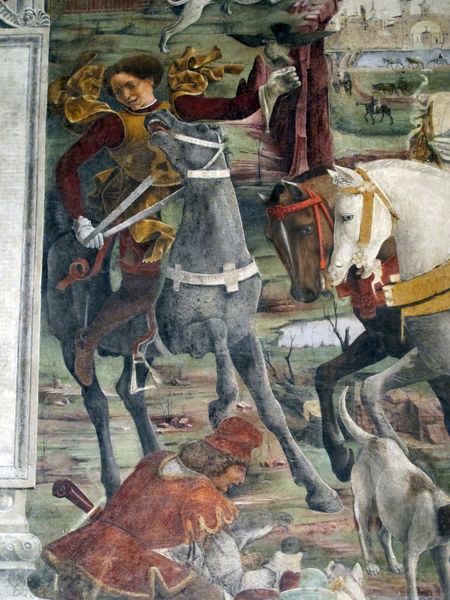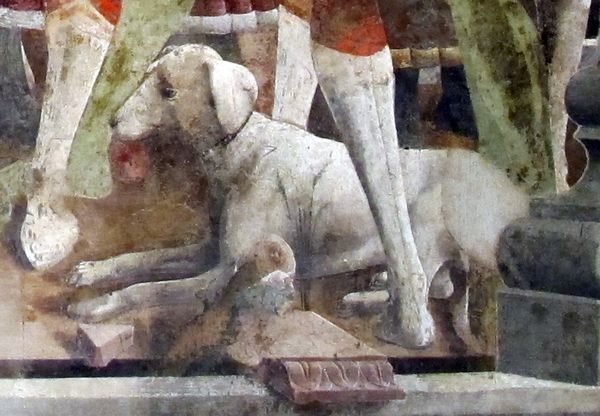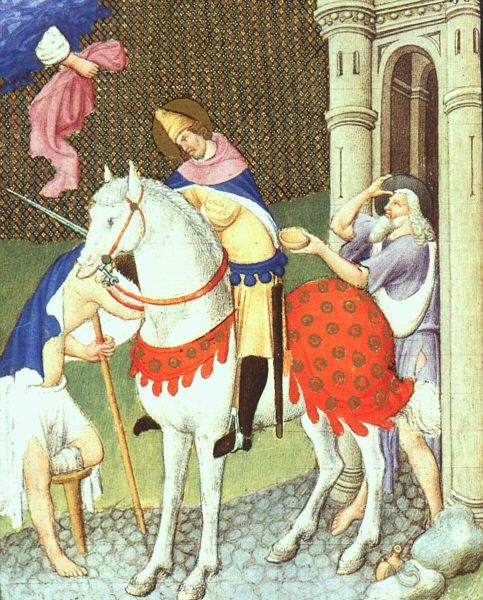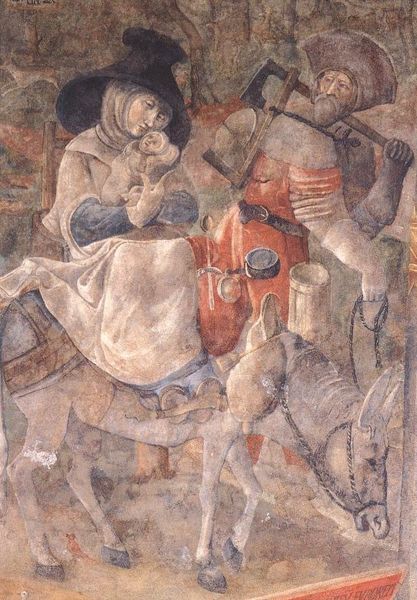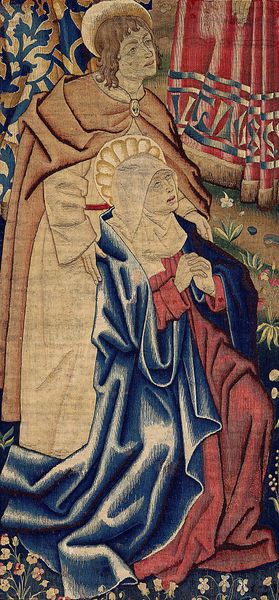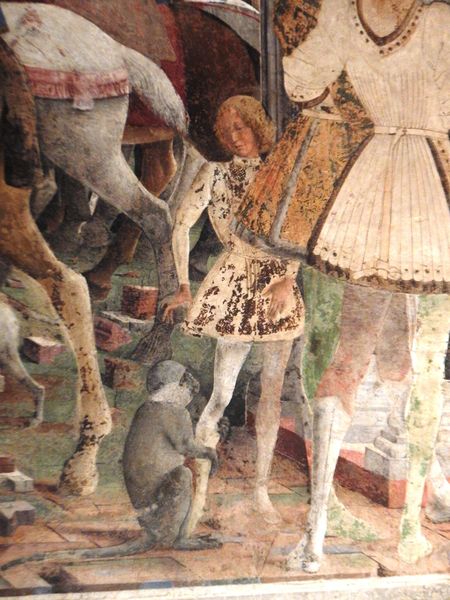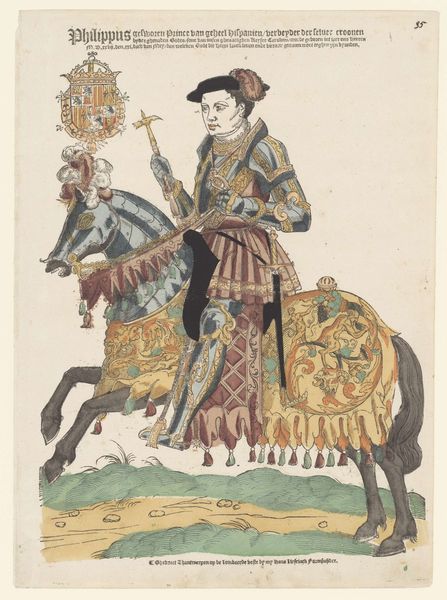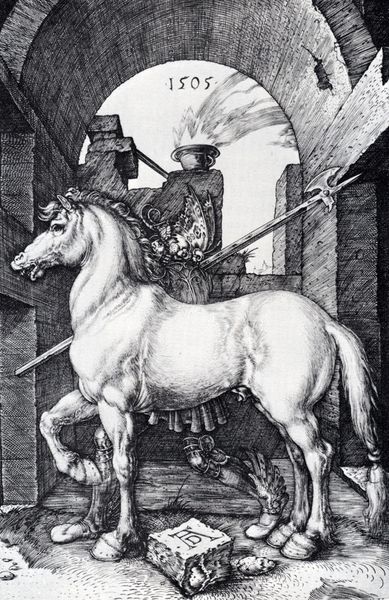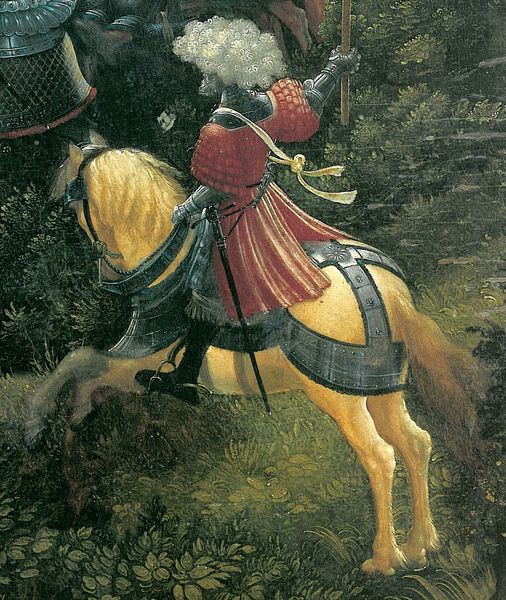
fresco
#
landscape
#
figuration
#
fresco
#
oil painting
#
horse
#
history-painting
#
italian-renaissance
Copyright: Public domain
Curator: Let’s consider this detail from Francesco del Cossa's fresco cycle in the Palazzo Schifanoia, specifically, a portion of his "April" scene dating back to around 1470. What springs to mind when you first observe it? Editor: The cool tones are what strike me immediately. The grays and muted reds give it a stately, almost melancholic air, even within the supposed vibrancy of an April scene. Curator: Cossa’s "April" is teeming with political and social implications. This particular panel likely references the reign of the House of Este, projecting their power and cultural aspirations through a humanist lens. Think about how displays of wealth and power operated within these intricate court societies. Editor: Yes, courtly life translated into these elaborate visual codes. Structurally, observe how the lines are clean, almost austere. The forms are highly idealized, yet retain a sense of mass and volume through chiaroscuro—there is almost a geometric harmony between forms like horse and rider here. Curator: And that idealization plays into how nobility perceived themselves and wanted to be perceived. The depiction of the horse, for example, connects directly to themes of status, war, and dominance—key markers for aristocratic identity at that time. But how are the lower classes portrayed in these scenes, if at all, and how does that perpetuate or challenge established power structures? Editor: Certainly, the interplay of social class representation or lack thereof would make an excellent case study. I'd point out the use of color again here too, in order to help to separate the noble classes; for example, a spot of brighter pigment functions to lead the eye around. It guides the viewer through the painting. Curator: Del Cossa was innovative for his time, blending classical allusions with realistic portraiture and including everyday life, even within these courtly representations. Think about his position as an artist within that social framework, navigating patronage and creative expression, reflecting and refracting prevailing social norms. Editor: Considering its position as fresco, the scale must surely amplify these formal qualities we have just examined. With the flattening effect fresco creates, attention is more likely to be driven to colouration to pull out key details, while each colour becomes more symbolic in it's contrast and execution. Curator: It leaves me wondering how effectively these symbolic constructs still function, now removed from their immediate socio-political context. What kind of new dialogues could be constructed about the artwork, placing it in conversation with different audiences today? Editor: Indeed, there is a great complexity to Cossa's use of formalism; what does it allow us to interpret here, and what has been excluded. A worthwhile analysis.
Comments
No comments
Be the first to comment and join the conversation on the ultimate creative platform.
